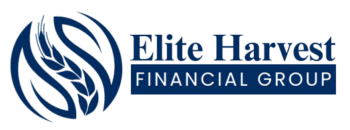Trust – Estate Planning
What Is a Trust?
Many people believe trusts are exclusively for the wealthy, but this common misconception overlooks their broader value in modern financial planning. A trust serves as a powerful legal arrangement that protects assets and ensures they’re distributed according to specific wishes, making it relevant for various financial situations and goals. Whether you’re considering a living trust for estate planning, a revocable trust for flexibility, or a trust fund for future generations, understanding the basics helps you make informed decisions about your financial future.
Understanding Modern Trust Basics
A trust represents a legal relationship where one party transfers assets to another party to manage for the benefit of specified individuals or purposes. This fundamental arrangement forms the backbone of modern trust structures, providing a versatile tool for asset management and protection.
What Defines a Trust in Today’s World
A trust is established when a person transfers legal ownership of assets to trustees who manage them according to specific terms. Three essential characteristics, known as certainties, must exist for a valid trust:
- Certainty of intention to create the trust
- Certainty of subject matter (clearly identified assets)
- Certainty of objects (identifiable beneficiaries)
Key Parties Involved in a Trust
The trust relationship involves three primary parties working together to achieve specific financial objectives:
| Party | Role | Responsibilities |
|---|---|---|
| Creator | Establishes trust, transfers assets | Settlor/Trustor |
| Manager | Administers trust, follows terms | Trustee |
| Recipients | Receive benefits from trust assets | Beneficiaries |
How Modern Trusts Protect Assets
Modern trusts serve as powerful protective mechanisms through several key features. They can shield assets from creditors, manage wealth across generations, and provide tax advantages when properly structured. The trust’s protective capacity stems from its ability to separate legal ownership from beneficial ownership, creating a distinct entity that holds and manages assets according to predetermined terms.
Trusts offer protection through various mechanisms, including spendthrift provisions that prevent beneficiaries from accessing their entire inheritance at once. They can also safeguard assets from future changes in legislation and provide security in unstable political environments. For business owners, trusts facilitate succession planning while maintaining operational continuity.
The versatility of modern trusts extends to digital asset protection, allowing for the secure management of cryptocurrency, online investments, and other virtual properties. This adaptation to contemporary asset types demonstrates how trust structures continue to evolve with changing financial landscapes.
Common Trust Applications Today
Modern trust applications have evolved significantly to address contemporary wealth management challenges. Today’s trusts serve diverse purposes, from protecting digital assets to ensuring smooth business transitions.
Digital Asset Protection Trusts
Digital asset protection trusts provide a secure framework for managing cryptocurrency, NFTs, and other virtual assets. These specialized trusts offer unique advantages:
| Asset Type | Protection Features |
|---|---|
| Cryptocurrency | Private key management, succession planning |
| NFTs | Ownership verification, transfer controls |
| Digital Documents | Access management, preservation |
Family Wealth Preservation
Family wealth preservation through trusts has become increasingly sophisticated, particularly for complex family structures. Modern trust strategies address various preservation goals:
- Asset protection from creditors and legal claims
- Tax-efficient wealth transfer between generations
- Special provisions for blended families
- Educational funding and legacy planning
Business Succession Planning
Business succession planning through trusts creates a structured approach for ownership transition. A well-designed trust can facilitate business continuity by establishing clear guidelines for succession, protecting operational assets, and maintaining company stability during leadership changes. Buy-sell agreements incorporated into trust structures help ensure smooth ownership transitions, while specific provisions can address management roles and responsibilities during transition periods.
The integration of these modern trust applications demonstrates how traditional trust concepts have adapted to contemporary needs. Whether protecting digital investments, preserving family wealth, or ensuring business continuity, trusts provide flexible solutions for various asset protection challenges. Trust structures continue to evolve, incorporating new features to address emerging asset classes and changing family dynamics.
Choosing the Right Trust Structure
Selecting the appropriate trust structure requires careful consideration of your financial goals and circumstances. Each trust type serves distinct purposes and offers different levels of control and protection.
Living vs Testamentary Trusts
The timing of trust creation marks the fundamental difference between living and testamentary trusts. A living trust takes effect during the grantor’s lifetime, while a testamentary trust activates upon death through instructions in a will. This distinction affects various aspects:
| Feature | Living Trust | Testamentary Trust |
|---|---|---|
| Creation Timing | During lifetime | After death |
| Probate Avoidance | Yes | No |
| Privacy | Maintains privacy | Public record |
| Initial Costs | Higher | Lower |
Revocable vs Irrevocable Options
The choice between revocable and irrevocable trusts depends on your need for flexibility versus asset protection. Revocable trusts allow modifications during the grantor’s lifetime, providing control over assets and trust terms. In contrast, irrevocable trusts offer stronger asset protection and tax benefits but require permanent transfer of asset ownership.
Specialized Trust Types for Specific Needs
Modern trust planning includes specialized structures designed for particular situations:
- Charitable Remainder Trusts: Provide income to beneficiaries while supporting charitable causes
- Qualified Domestic Trusts (QDOT): Protect assets for non-citizen spouses
- Special Needs Trusts: Support disabled beneficiaries without compromising government benefits
- Qualified Personal Residence Trusts: Transfer residential property with tax advantages
Each specialized trust type addresses specific challenges in estate planning, from minimizing tax exposure to protecting assets for future generations. The key is aligning the trust structure with your long-term objectives while considering factors such as tax implications, asset protection needs, and beneficiary circumstances.
Setting Up and Managing Your Trust
Establishing and managing a trust requires careful attention to legal requirements and administrative responsibilities. A well-executed trust setup ensures proper asset protection and smooth administration for years to come.
Step-by-Step Trust Creation Guide
Creating a trust involves several critical steps that must be completed in sequence:
| Step Action | Required Key | Considerations |
|---|---|---|
| 1. Documentation | Create trust document | Clear terms and conditions |
| 2. Asset Transfer | Open trust account | Proper asset registration |
| 3. Legal Review | Verify compliance | Meet state requirements |
| 4. Funding | Transfer initial assets | Complete documentation |
Trust Management Best Practices
Effective trust management requires consistent adherence to established practices. Essential management responsibilities include:
- Maintaining detailed financial records of all transactions
- Filing annual tax returns and required documentation
- Regular communication with beneficiaries
- Monitoring and reviewing investment performance
- Ensuring compliance with trust terms
Common Trust Administration Pitfalls
Trust administrators must navigate several challenges to maintain effective trust management. Frequent mistakes include misunderstanding fiduciary duties, failing to maintain accurate records, and delayed distributions to beneficiaries.
Proper trust administration requires careful attention to legal obligations and beneficiary needs. Trust administrators must prioritize the beneficiaries’ interests while ensuring compliance with trust terms. Professional guidance from legal and financial advisors can help avoid common pitfalls and ensure proper trust management.
Regular reviews of trust performance and periodic updates to investment strategies help maintain the trust’s effectiveness. Administrators should document all decisions and maintain clear communication with beneficiaries to prevent misunderstandings and potential disputes.
Trust administrators must also stay current with tax obligations and regulatory requirements. This includes filing necessary returns, maintaining proper documentation, and ensuring all distributions align with trust provisions. Understanding these responsibilities helps prevent administrative errors that could compromise the trust’s integrity.
Conclusion
Trust structures serve as valuable financial planning tools for people across various economic backgrounds, not just the wealthy. Modern trusts offer flexible solutions for asset protection, whether managing digital currencies, preserving family wealth, or ensuring smooth business transitions.
Successful trust implementation depends on selecting the right structure and following proper setup procedures. Living trusts provide lifetime control and privacy, while specialized trusts address specific needs such as charitable giving or special needs planning. Professional guidance proves essential for navigating trust creation and management while avoiding common administrative pitfalls.
Trust arrangements continue evolving alongside changing financial landscapes and family dynamics. Their enduring value lies in providing secure, structured approaches to asset protection and wealth transfer. People considering trust creation should carefully evaluate their specific needs, consult qualified professionals, and maintain diligent oversight of trust administration to ensure long-term success.
Get the Latest Financial Tips and Trends
Sign Up for Our Newsletter to Master Life Insurance, Investments, and Mortgages
Additional Services
Empower Your Financial Decisions
Book Your Free Consultation to Discuss Your Financial Needs and Goals













